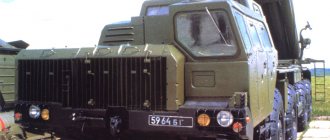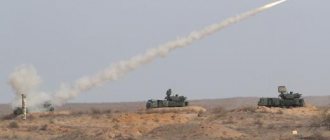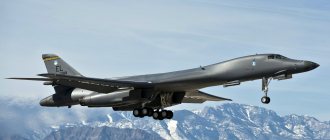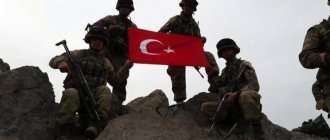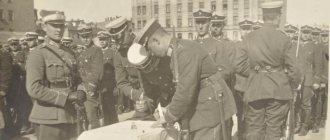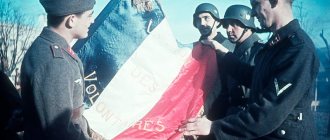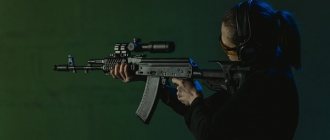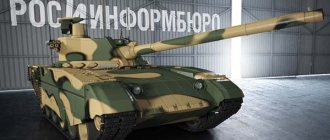The list of the best armored infantry fighting vehicles in the world includes American, Russian, German, British and Swedish vehicles. The models differ from each other in design, weight, engine, armor protection, and weapons. The price per piece varies from 1.7 to 9 million dollars. Modern combat vehicles are used not only to transport military personnel, but also for fire support.
Freccia
The Italian Freccia infantry fighting vehicle is considered one of the best combat vehicles in the world. The 8-wheeled model was created by FIAT in 1996.
Main features of the BMP:
- 26 t (weight);
- 3/8 (crew/troops);
- VTCA diesel engine (110 km/h);
- 800,000 m (power reserve);
- 25 mm Oerlikon KBA (automatic gun);
- 7.62 mm (machine guns);
- Spike ATGM;
- protection against 30 mm armor-piercing projectile, 7.62 mm bullet.
Advantages:
- fast acceleration to maximum speed;
- excellent armor.
Flaws:
- low rates of hitting the target (on the move);
- poor off-road performance.
Soviet "two"
One of the most popular and honored combat vehicles, the BMP-2 is the “workhorse” of Soviet motorized riflemen. Structurally simple and unpretentious in maintenance, the amphibious BMP-2 more than once rescued its crew and troops in the hot situations of the Afghan war and other conflicts.
Mechanic driver of the BMP-2 during the tactical exercise "West-2017"
In 1981, the chief designer of the BMP-2, Blagonravov, and a group of specialists came to Afghanistan to see how his new vehicle was tested in combat conditions. The troops greeted him with delight.
“We have a new infantry fighting vehicle with the “thirty”. This car is what we need: dushmans are afraid of it and call it “shaitan-arba,” said one of the officers at a meeting with the designer. It is believed that the command finally decided to adopt the BMP-2 for service precisely after this episode.
The crew of the BMP-2 during the individual race of BMP crews as part of the all-army competition "Tank Biathlon 2017" in the Khabarovsk Territory
The main feature of the BMP-2 is the weapon stabilization system in two planes. This distinguished the “two” from its foreign counterparts and made it possible to conduct targeted fire on the move.
Armaments include a rapid-firing 30-mm 2A42 automatic cannon with dual-belt selective feed, a coaxial 7.62-mm PKT machine gun, and a Konkurs or Fagot anti-tank guided missile launcher.
The hull is welded from rolled sheets of durable steel armor, thermomechanically treated. The six-cylinder diesel engine inherited from the BMP-1 accelerates the 14-ton vehicle to 65 kilometers per hour on the highway.
Infantry fighting vehicles (BMP-2)
Inside there is room for seven paratroopers and three crew members. The powder gas suction system saves soldiers from poisoning when firing from machine guns through loopholes.
To prevent radioactive dust or gases from entering the machine, a filter-ventilation unit is provided that creates excess pressure inside. The BMP-2 and its numerous modernized versions are still in service with the armies of dozens of countries around the world.
Warrior
British tracked infantry fighting vehicle, developed in the 70-80s by GKN Sankey. The latest modification is Warrior 2000.
Description of the BMP:
- 23.5 t;
- 3/7 people;
- CV8 TCA diesel engine (75 km/h);
- 500,000 m without refueling;
- 30 mm L21A1 Rarden gun or 40 mm CTAI;
- 7.62 mm L94A1 (machine gun);
- 2 x 4 smoke grenade launchers;
- from 25 mm BPS, from 14.5 mm B-32 (security).
Pros:
- all-terrain model;
- high shooting accuracy at medium speed.
Minuses:
- lack of stabilization in Rarden;
- high price.
The world's best armored vehicle has been tested in Russia
BMP-3M "Dragoon" is ready for mass production
The Russian Ministry of Defense announced the completion of testing of the new BMP-3M Dragoon infantry fighting vehicle. This means that the model, which has undergone a deep modernization to a state of practically new development, will soon be put into mass production.
As reported in the military press, the Americans have already included this infantry fighting vehicle in the list of the most powerful infantry vehicles, because the specific power of its engine is the highest in the world.
The most powerful in the world? Yes. And the best
Strictly speaking, American analysts from the “brain Dragoon” to the list of the four most powerful infantry fighting vehicles in the world. But in fact, there is nothing behind this except the pathetic barbaric manner of hiding US defeats under a heap of camouflage nets. Here, too, the American M2 Bradley infantry fighting vehicle with engines with power from 500 to 660 horsepower, and the French VBCI infantry fighting vehicle with an engine of 550 horsepower were attached to the Russian infantry fighting vehicle. and the Italian infantry fighting vehicle VCC-80 Dardo - with 512 hp.
The BMP-3M Dragoon has a multi-fuel supercharged gas turbine engine UTD-32 (albeit on a stand, but this does not fundamentally change the picture) of 816 hp.
That is, it is no longer one of the four, but the first of the most powerful.
In the same way, the Dragoon wins the correspondence competition in terms of specific engine power (that is, power per unit mass) - 38 hp. per ton. Accordingly, the notorious American M2 Bradley with its ridiculous 19.74 hp/t is only in fourth place after the German “Puma” – 34.59 hp/t and the British FV510 “Warrior” – 23.5 hp. s./t.
This indicator depends on the weight of the machine. The Dragoon has a chassis weight of 15.5 tons, that is, with all body kits, a maximum of 20 tons. Experts talk about 19 tons in the basic version. Colleague "Bradley" initially pulled 23 tons, and in the modern modification M2A3 SSS reached 34 tons.
Another consequence of this: the Dragoon BMP swims well: it can walk on water for 7 hours at a speed of 10 km/h. "Colleague" overcomes water obstacles more slowly - 6 - 7.2 km/h, while the buoyancy reserve is extremely small and is enhanced only by deploying additional watercraft in the form of canvas covers. The speed is 70 and 66 km/h, respectively, and the range is 600 and 480 km.
In general, the Bradley doesn’t hold up as a car even to its competitor.
Does it pull like a combat vehicle?
District stage of the all-army competition “Suvorov Onslaught-2017” in the Khabarovsk Territory. Photo: Yuri Smityuk/TASS
An infantry fighting vehicle is not a tank. But…
An infantry fighting vehicle (IFV) is similar to a small tank: tracks, armored hull, turret with a cannon. It differs from an armored personnel carrier (APC), which is on wheels, has a smaller gun, and a thinner turret. In general, an armored personnel carrier is a vehicle for transporting personnel, and an infantry fighting vehicle is for transportation and cover in battle. And even to break through the enemy’s defense that is not very well equipped.
Therefore, the BMP-3 became a good technical breakthrough 30 years ago, when it entered service. No wonder it was purchased in a dozen countries. But the BMP-M3 “Dragoon” became, one might say, a breakthrough in the square.
First, protection. Rolled aluminum armor spaced with steel screens. It can be reinforced with additional multi-layer armor, dynamic protection complex, armor screens and grilles against shaped charges. This, of course, increases the mass and weight of the vehicle, but it can even hold anti-tank grenades of the PG-7VL type. So it’s quite a tank, which, if it had been near Prokhorovka in 1943, alone would have taken out a regiment of German Tigers. Deliver only shells...
With weapons - here General Rotmistrov would also give his soul for the same ones that are on the Dragoon. These are two guns at once - 100 mm and 30 mm, as well as a 7.62 caliber machine gun. Everything in one complex. The 100 mm gun can be replaced with a 125 mm one. Let me remind you that the Tiger was a fierce enemy with an 88 mm cannon. The BMP's ammunition capacity includes 40 rounds and 8 anti-tank missiles (ATGM) for a large cannon, 500 rounds of various types for a 30-mm cannon, and 2,000 rounds of ammunition for a machine gun. One of the modifications of the ATGM, the 9M117M1 Arkan missile with a tandem warhead, penetrates a homogeneous armor plate of 750 mm. That is, the same “Tigers” with their 100 mm armor, the “Dragoon” could kill three at once with one shot. With modern tanks like the American M1A2 Abrams, however, a different proportion applies: you need 2-3 Arcana to kill him. But let us remind you that the BMP has eight such missiles in its ammunition supply.
The effective range is about two hundred armor-piercing tracer and armor-piercing sub-caliber projectiles. The machine gun mows down enemy personnel at a speed of 800 rounds per minute at a distance of almost 2 kilometers, with about 2,000 rounds of ammunition. The maximum firing range, depending on modifications, is up to 12 km, the sighting range (also depending on) is from 4.5 to 7 km.
And all this - against the backdrop of a developed fire control system (FCS) "Vityaz" - with a weapons stabilizer, range finder, ballistic computer, roll, speed and heading sensors, sight-guidance device and other devices. For example, to aim a projectile at a laser beam or radio beam. Vertical aiming angles from minus 6 to plus 60 degrees make it possible to hit targets on the upper floors of buildings and in the mountains, and even fire at low-flying low-flying air targets.
But the most interesting “trick” is that the fighting compartment of the Dragoon is... lifeless. However, this, of course, is said for the sake of a nice word, but in reality it is really not inhabited. An unmanned module, officially speaking. And the crew of 3 people sits in the body, protected not only by armor, but also by an engine moved forward, like a normal car. It receives combat information on displays, shoots almost from the keyboard - in a sense, modern warfare has begun to resemble old computer games...
And "Armata"?
Yes, but our troops actually began to receive vehicles on the Armata platform - not only the now famous T-14 tank, but also the T-15 infantry fighting vehicle. Is the wastefulness of the Soviet Union, which produced a lot of overlapping types and types of weapons, being repeated?
Military experts confidently answer: no. These vehicles have different purposes, different battlefields. The heavy T-15 is intended more for combat as part of tank formations. This is a vehicle for transporting tank troops - you can’t ride soldiers in modern combat with armor like in the Great Patriotic War. But the BMP-3M is lighter and has the characteristics of a middle-class vehicle. This means that it is more maneuverable and, accordingly, more suitable for supporting attacks by infantry units.
In total, the vehicle has space for 6 paratroopers, who will travel in almost car-like conditions. Even with air conditioning.
But the main thing, of course, is not to go well, but to fight well and carry out the combat mission. And in this sense, we can say with confidence: Russian designers have made a good machine that will help fighters perform it much more effectively than their potential opponents. Because the BMP-3M turns out to be not only the most powerful, but also the best combat vehicle in the world.
Among foreigners, of course.
MOWAG Piranha V
Swiss combat vehicle of the 5th generation. The 8-wheeled model was first introduced in 2010.
Features of the BMP:
- 33 t;
- 3+8 passengers;
- diesel engine MTU 6V199 TE21 or Scania DC13 (100 km/h);
- 1000 km without refueling;
- 12.7 mm machine gun;
- 30 mm autocannon;
- 40 mm grenade launcher (TOW anti-tank missile);
- from 30 mm and 14.5 mm shells (armor-piercing protection).
Advantages:
- large power reserve;
- possibility of installing any weapon.
Flaws:
- low traffic;
- heavy weight.
English "Warrior"
The British infantry fighting vehicle MCV-80 Warrior is a real knight in heavy armor made of rolled sheets of aluminum-magnesium-zinc alloy. Combined protection protects the crew and troops from large-caliber machine-gun bullets and shrapnel.
The reinforced “belly” can withstand the explosion of a 10-kilogram anti-tank mine, and there are anti-cumulative screens on the sides. However, this massive body kit does not prevent the infantry fighting vehicle from accelerating to 75 kilometers per hour.
British infantry fighting vehicle (IFV) "Warrior"
By analogy with later versions of the American Bradleys, the habitable internal compartments of the Warrior are covered with a special material that holds armor fragments that fly off when hit. It was also not deprived of weapons: it has a 30-mm L21A1 automatic cannon, a coaxial machine gun, and a 94-mm LAW-80 grenade launcher. The infantry fighting vehicle can accommodate three crew members and seven paratroopers.
British infantry fighting vehicle (IFV) "Warrior"
In total, more than a thousand “Warriors” were produced for the British Army, many of them managed to take part in local armed conflicts. The car proved to be extremely indestructible. There is a known case when it withstood hits from one and a half dozen anti-tank grenades.
BMP-3
Russian armored tracked vehicle. The BMP has been produced since 1987.
Main characteristics:
- 18.7 t (weight);
- 3/7 people (crew/troops);
- UTD-29M diesel engine (70 km/h);
- 600,000 m without refueling;
- 2A70 (100 mm gun);
- 2A72 (30 mm automatic gun);
- ATGM 9M 117;
- 7.62 mm machine gun;
- from 30 mm BT and 12.7 mm B-32 (protection);
- $1.17 million (price).
Pros:
- in the latest models, an improved combat module (“Berezhok”, “Epoch”);
- good shooting accuracy.
Minuses:
- small power reserve;
- sensitivity to diesel fuel composition.
From the creators of "Tiger"
The German Marder infantry fighting vehicle is one of the most successful examples of armored vehicles of post-war Western Europe. Since the late 1960s, German industry has produced more than two thousand such machines for the Bundeswehr.
A durable steel body made from sheets of rolled armor welded at certain angles reliably protects three crew members and seven paratroopers from bullets and shrapnel. The BMP was developed by the company, known for its Tiger tank.
German infantry fighting vehicle (IFV) "Marder"
The first modifications included a multi-fuel turbocharged Daimler-Benz diesel engine with a capacity of 600 horsepower. This was quite enough to accelerate the tracked vehicle on the highway to 75 kilometers per hour. The modernized infantry fighting vehicles are already equipped with a 1000-horsepower unit.
German infantry fighting vehicle (IFV) "Marder"
The Marder's main weapon is a 20-mm Mk20DM5 Rh202 automatic cannon with a rate of fire of up to 1000 rounds per minute. High-explosive fragmentation shells are used to fire at infantry and vehicles, and armor-piercing sub-caliber shells are used to combat enemy infantry fighting vehicles and armored personnel carriers.
The latter, at a distance of up to one and a half kilometers, confidently penetrate armor two fingers thick at an angle. To combat enemy personnel, there are two 7.62 mm MG3A1 machine guns: one is coaxial with the cannon, and the second is mounted on the stern.
German infantry fighting vehicle (IFV) "Marder"
"Marders" have been modernized many times. To increase firepower, they were equipped with Milan anti-tank guided missile systems, and to enhance protection they were equipped with additional mounted armor and mine screens.
The BMP received its baptism of fire in Afghanistan. To replace the Marder, the Puma has been developed - a new combat vehicle that is already being supplied to Bundeswehr units.
Sonderkraftfahrzeug 251
The German half-track transporter was produced from 1939 to 1945.
The latest modification is Sd.Kfz. 251/23.
Main characteristics:
- 9.14 t;
- 2+10 passengers;
- Maybach carburetor engine (53 km/h);
- 7.92 mm MG-34 or MG-42 (machine gun);
- 20 mm tank gun;
- from 14.5 mm shells (protection).
Advantages:
- good maneuverability;
- capacity 12 people.
Flaws:
- weak armor protection;
- small power reserve (300,000 m).
K2 "Black Panther"
This main battle tank was adopted by South Korea in 2014. It was intended to replace the US M14 medium tanks, which had been in use since the fifties. The Korean armed forces initially intended to purchase just under 700 tanks, but due to a shortage of funds, only 297 Black Panthers were purchased. Moreover, the cost of each of them was more than eight million dollars, which made them the most expensive in the whole world.
All electronic systems of the vehicle are integrated using the tank information and control system, abbreviated as TIUS. Automated control is provided by a special combat information and control system. A tank gun is installed, the barrel length of which is 55 calibers. An active protection complex with a thermal imager and three-dimensional radar is used.
ZBD-08
Chinese 8-wheeled infantry fighting vehicle. Produced since 2006.
Description of the BMP:
- 21.5 t;
- 3+7 people;
- diesel engine BF6M1015C (100 km/h);
- 800,000 m without additional refueling;
- 30 mm ZPT-99 gun;
- 7.62 mm PKT machine gun;
- ATGM HJ-73;
- 30 mm and 14.5 mm (protection).
Pros:
- in new versions 100 mm cannon;
- armor improved.
Minuses:
- average cross-country ability;
- swimming capabilities are reduced.
T-90
The Russian tank, known as the Vladimir, appeared in the late eighties, but was put into service later, in 1992. The chief designer was Vladimir Ivanovich Potkin, who died in 1999. After this, the Russian government assigned a verbal name to this tank.
For about ten years, the vehicle was considered the best-selling main battle tank. However, supply costs subsequently began to increase. If in 2010 they amounted to seventy million rubles, then in 2011 the figure rose to 118 million, which led to the cessation of purchases.
The tank is capable of hitting targets on the move at a distance of up to five kilometers, even if the battle is fought by an inexperienced person. Master Gunners perform significantly better in both speed and distance. Guidance is carried out using the 1A43 complex, which includes automatic sensors for firing conditions, a ballistic computer and a guidance device.
M1126 Stryker
American 8-wheeled armored vehicle. Produced since 2002.
Features of the BMP:
- 17.2 t;
- 2+9 passengers;
- Caterpillar diesel engine (97 km/h);
- 531 km without refueling;
- 40mm Mark 19 grenade launcher;
- machine guns 12.7 mm M2 Browning or 7.62 mm M240;
- steel and composite (Mexas) protection.
Advantages:
- convenient door (ladder) for landing;
- enhanced armor protection.
Flaws:
- poor cross-country ability;
- low buoyancy.
World infantry fighting vehicles: Achzarit and BMP-1
Achzarit is Israeli heavy equipment that is used exclusively for defensive purposes. Currently, it is the most protected armored vehicle of its kind. “In the forehead” there is an armor plate 200 mm thick, which has been improved with dynamic protection and carbon fibers. All this added 17 tons of weight to the armored personnel carrier, but significantly increased the personnel’s chances of survival. Achzarit is ideal for combat in urban environments. This is due to thick armor plates. The vehicle is not afraid of shots from grenade launchers even at point-blank range, to say nothing of fragmentation damage.
The Universal Carrier
British tracked armored personnel carrier from World War II. Praying Mantis is the latest experimental modification.
Description:
- 3,800 kg;
- 1+4 people;
- carburetor 8-cylinder engine (48 km/h);
- 225,000 m without refueling;
- 37 mm anti-tank gun;
- 7.7 mm Bren or 13.9 mm PTR Boys machine guns;
- rolled steel armor.
Pros:
- relatively high maneuverability;
- used as a tractor.
Minuses:
- weak firepower;
- problems with the chassis.
M1114
American armored 4-wheeled vehicle 2nd generation HMMWV. Used for the needs of the US Armed Forces.
Description of the BMP:
- 5,489 kg;
- 5 people;
- diesel engine (125 km/h);
- 12.7 mm M2 machine gun;
- 40 mm Mkl 9 grenade launcher;
- armor against 7.62 mm bullets, mine fragments and shells.
Advantages:
- armored windshield;
- good visibility.
Flaws:
- low level of armor protection;
- average cross-country ability.
The best fighting vehicles in the world: M1114
This armored vehicle comes from America. Seeing it in the photo, you can immediately guess that this is the same legendary Humvee. Around 1990, a decision was made to replace the M998 chassis, which was not effective enough in a military conflict. At the same time, the developers were given the task of improving speed, anti-fragmentation and mine-resistant armor and keeping the weight to 5 tons. All this has been achieved. Among other things, impressive firepower was added. In particular, detachable armament consists of anti-tank missile systems, remote-controlled 12.7 mm machine guns, as well as roof-mounted light machine guns.
Today, the Humvee is a symbol of the US Army, as this armored mobile wheeled vehicle has been used in all conflicts for 30 years. According to some reports, about 200,000 different modifications of the Humvee have been manufactured. Of course, this armored vehicle was very often shelled, broke down, caught fire, stalled and exploded, but the survival rate of the crew was quite high.
"Kurganets-25"
Russian tracked platform for infantry fighting vehicles from Rostec. Produced since 2015. Used to improve outdated machines.
Main characteristics of infantry fighting vehicles based on the Kurganets-25 platform:
- 25,000 kg;
- 3+8 passengers;
- 80 km/h;
- 30 mm autocannon 2A42;
- 7.62 mm machine gun;
- ATGM "Kornet";
- protection from art. shells.
Pros:
- computerized combat module;
- high shooting accuracy.
Minuses:
- no automatic grenade launcher;
- profile vulnerable to a grenade launcher.
Puff Bradley
The M2 Bradley heavy infantry fighting vehicle entered service with the American army in 1981 and immediately gained popularity among the infantry. First of all, because of its unprecedentedly high armor protection for this type of vehicle.
Its peculiarity is that screens made of steel of different hardness are spaced apart. Such a “layer cake” confidently “resists” hits from 30-mm armor-piercing shells.
To protect against cumulative RPG grenades, dynamic protection can be installed. The upgraded vehicles are additionally lined with Kevlar inside, which protects the crew of three people and six paratroopers from armor fragments in battle.
US M2 Bradley infantry fighting vehicle (IFV)
At the same time, the “Bradley” is quite “nimble” - thanks to a powerful turbodiesel, the 22-ton car “runs” along the highway at a speed of 70 kilometers per hour. An impressive array of weapons includes a 25mm M242 cannon, a 7.62mm M240C machine gun, a TOW anti-tank missile system and six M231 ball-mounted assault rifles in the troop bay.
Thus, in battle, an infantry fighting vehicle instantly turns into a mobile checkpoint bristling with trunks. The TOW complex “works out” tanks at a distance of up to three kilometers.
US M2 Bradley infantry fighting vehicle (IFV)
The landing group can leave the Bradley through the top hatch or, which is valuable in battle, through the rear ramp, using the body of the vehicle as cover from enemy fire. In total, the Americans managed to “stamp” about seven thousand of these infantry fighting vehicles. They were successfully used in the Iraq War and other armed conflicts.
US M2 Bradley infantry fighting vehicle (IFV)
Marder
German tracked armored vehicle of the 70s of the last century. The latest version is Marder 2 M12.
Description of the BMP:
- 42.6 t;
- 3+7 passengers;
- motor MTU MT 881;
- 75 km/h;
- 30-mm gun MK-30-2;
- 7.62 mm machine gun;
- ATGM "Milan";
- from 30 mm BPS, 20 mm Rh202, cumulative BE (protection).
Pros:
- digital firing system;
- enhanced armor protection.
Minuses:
- heavy weight;
- high price.
M2 Bradley
Tracked American armored vehicle created in the 70s. The latest modification is M2 A3 (2000).
Description:
- 30,000 kg;
- 3+7 landing;
- 25mm M242 Bushmaster autocannon;
- 7.62 mm M240S;
- ATGM TOU-2;
- V8 engine Cummins V903;
- protection against 25 mm BP, 14.5 mm B-32.
Advantages:
- digital system;
- enhanced armor protection.
Flaws:
- heavy weight;
- poor maneuverability.
PT-91 Twardy
The Polish tank called RT-91 was created on the basis of the most popular second-generation battle tank of the USSR, the T-72 Ural. The first versions appeared in the early nineties, but serial production began in 1995. Later, a number of modifications with upgrade packages were released, as well as armored vehicles and a prototype anti-aircraft gun based on the RT-91.
The tank is equipped with a smooth-bore weapon with a 125 mm caliber and active armor, which significantly reduces the amount of damage from the first enemy shot. The design includes three machine guns, thanks to which the RT-91 works well at close and medium distances. It is used to destroy anti-aircraft guns.
CV 90
Swedish tracked infantry fighting vehicle from the 90s. The latest version is Strf 90.35 (2004).
Main characteristics of the infantry fighting vehicle:
- 35,000 kg;
- 3+8 passengers;
- 30/50 mm Bushmaster III autocannon;
- 7.62 mm Ksp m/39;
- diesel engine (70 km/h);
- protection against 30 mm BOPTS.
Pros:
- Saab UTAAS fire control system;
- enhanced armor protection.
Minuses:
- small range (320 km);
- low maneuverability.
K-21
South Korean tracked vehicle created in the early 2000s. The latest model is K21 PIP.
Description of the BMP:
- 26,000 kg;
- 3+9 landing;
- diesel engine Doosan D2840LXE (70 km/h);
- 40 mm S&T Dynamics K40 autocannon;
- 7.62 mm machine gun;
- Spike ATGM;
- bullet protection 14.5 mm, BPS 30 mm.
Advantages:
- presence of KAZ;
- computerized system.
Flaws:
- relatively small range (450,000 m);
- high price.
Puma
German infantry fighting vehicle of the latest generation. Produced since 2009.
Main characteristics:
- 43,000 kg;
- 3+6 passengers;
- diesel engine HPD (70 km/h);
- 30-mm autocannon MK 30-2/AVM;
- 5.56 mm HK MG4;
- Spike ATGM;
- protection against 45 mm BOPTS, 30 mm shells, 14.5 mm bullets.
Pros:
- remote controlled uninhabited tower;
- enhanced armor protection.
Minuses:
- high weight;
- relatively weak weapons.
